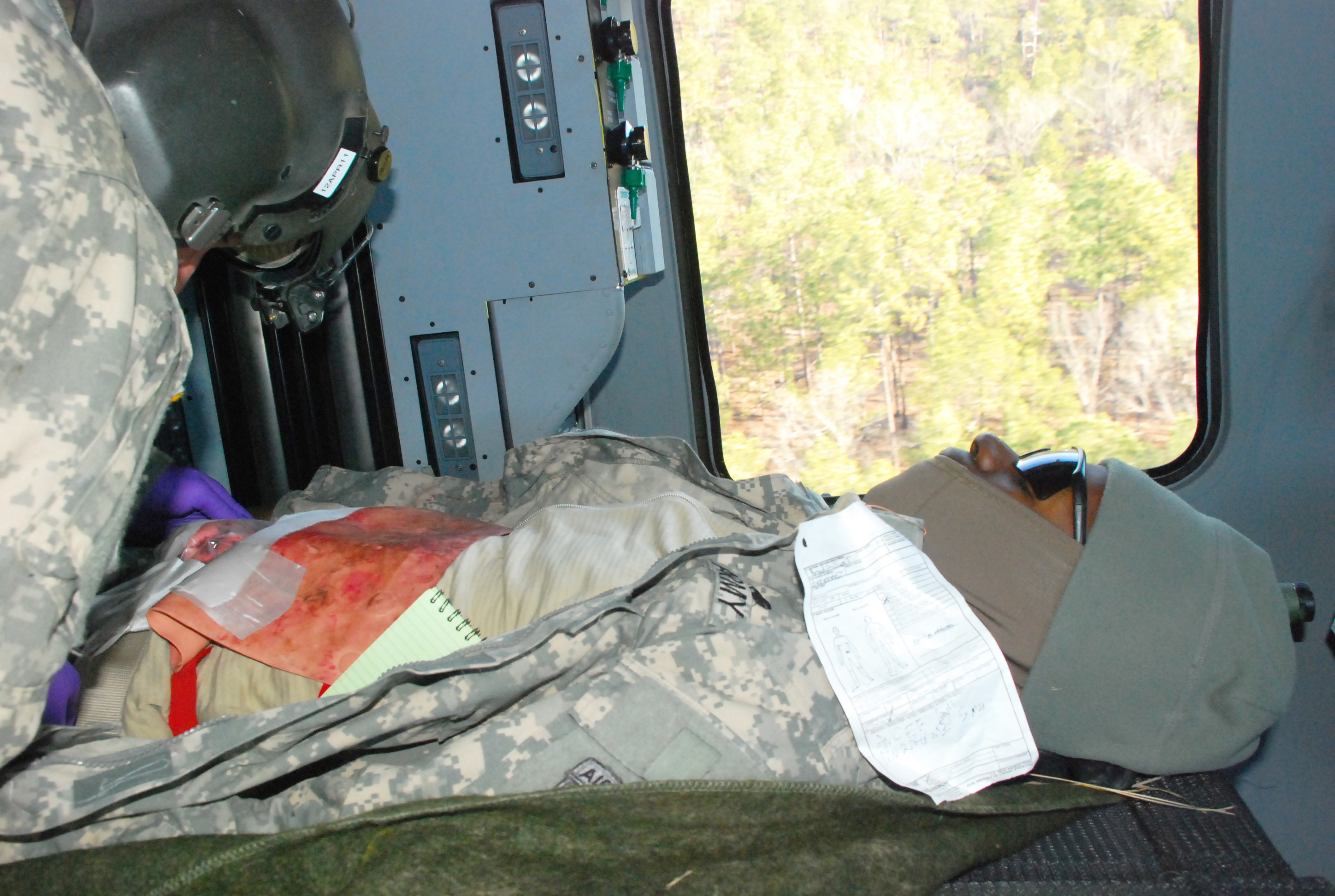FORT BRAGG, N.C.-After receiving the nine-line medevac call on the radio, the Soldiers rush to start their vehicle. Approximately 10 minutes after the initial call for help, the Black Hawk propellers are at full speed and the pilots, crewchief and flight medic begin their journey to save an injured Soldier.
The 82nd Combat Aviation Brigade medevac company conducted simulated medical evacuations in support of 3rd Brigade Combat Team, 82nd Airborne Division during the joint forcible entry exercise using the new HH-60M Black Hawk helicopter, Feb. 15.
The injuries can be as serious as head wounds, chest wounds and missing limbs. While not all of the injuries medevac crews see while transporting injured Soldiers during real-world operations are this serious, the job is not easy, and the training is necessary.
"I'm not a medic, so to see the injuries to Soldiers is the hardest part of my job," said Sgt. Emil Rivera, a medevac crew chief with Company C, 3rd General Support Aviation Battalion, 82nd CAB.
Fortunately, the injuries that day were not real, but the training gave both the 82nd CAB medevac company and the 3 BCT troops on the ground a chance to practice a very crucial process. Both, air and ground elements, work toward one, life-saving goal - to evacuate the Soldier to more secure environment with more equipped medical care.
"The best part for me is the hand-off and knowing the Soldier is going to live," said Staff Sgt. Aaron Burrows, medic with Company C, 3rd Battalion, 82nd CAB.




Social Sharing